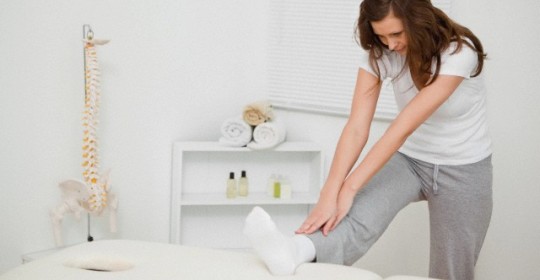
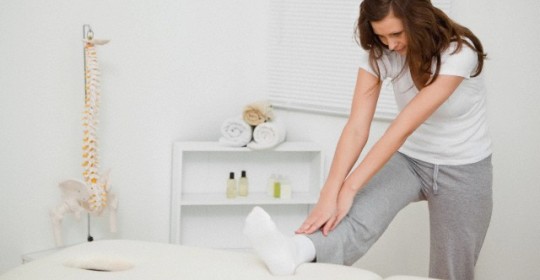
Compression on the sciatic nerve can cause long-term tremors in the legs
Case Sharing
70 years old female. 20 years ago was injured because tried to help a patient who was about to fall. At that time, her legs went numb and she had to rest for a while to regain consciousness. Later, she had back pain from time to time. As she age, her movements deteriorate. Low back pain become more and more serious, as well as leg tremors, weakness, difficulty turning around during sleep, and inconvenience somtimes. After many trials of therapy, acupuncture and massage, the results did not significantly improve. After spinal decompression, her condition has improved significantly. The most obvious improvement is that her feet tremble is less and are stronger than before. It is easier to change sleeping positions in bed, and the pain is greatly reduced.
Case analysis
The symptoms of sciatica caused by disc protrusion have been mentioned many times (see also the article published. The general symptoms due to the disc protrusion and nerve compression are mainly foot numbness, foot pain, and tight muscles. But in fact, it can also affect the muscle strength of the feet and cause long-term tremor. It seems that because of the accident in the above case, the patient has been suffering from low back pain and foot pain for more than ten years, and later found that their feet often tremble and cannot move. These are serious symptoms. When I first saw Ms. Chen, I noticed that Ms. Chen’s right foot was trembling constantly. At first I thought that she was afraid of the cold or had other causes (such as whether she had had a stroke or had mild Parkinson’s disease. Later, it was revealed that Ms. Chen’s lumbar spine was degenerated, and L5, S1 of the intervertebral disc was severely dehydrated and degenerated and pressing the S1 nerve root, which caused the weakening of the muscles of the right foot and the tremor of the right foot. After two months of Cox® decompression therapy, Ms. Chen’s right foot tremor has been greatly improved and her foot muscle strength has gradually recovered. In fact, each patient’s symptoms can have varying degrees. The above cases shows that disc compressing on the nerves can also make the patient’s feet tremble constantly.
L5/S1 cartilage protrusion muscle strength test
From the following 5 steps, it can test out if cartilage of L5/S1 is protruding:
1. Hamstring Muscle test
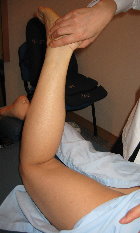 Pick up the leg with your hand and test the muscle strength of the muscles on the back of the thigh.
Pick up the leg with your hand and test the muscle strength of the muscles on the back of the thigh.
2. Glutrus Maximus test
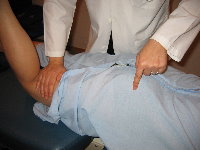 Press the thigh muscles to test the strength of the hip muscles.
Press the thigh muscles to test the strength of the hip muscles.
3. Calf Muscle test
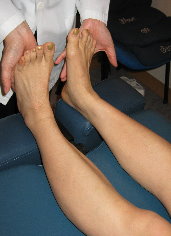 Hold the soles of the feet with the palms and push hard, paying attention to the patient’s hedging force.
Hold the soles of the feet with the palms and push hard, paying attention to the patient’s hedging force.
4. Test the muscle strength of the hallux
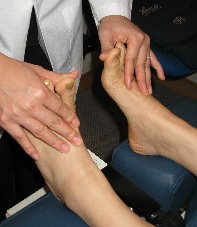 Bend the hallux upwards with the hands to test the muscle strength of the muscles connecting the hallux.
Bend the hallux upwards with the hands to test the muscle strength of the muscles connecting the hallux.
5. Testing the nerve reflex on the S1 nerve root
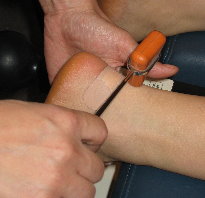 Tap the heel with a small mallet, and observe if the patient has a slight bounce nerve reflex in the foot.
Tap the heel with a small mallet, and observe if the patient has a slight bounce nerve reflex in the foot.

 Book an Appointment
Book an Appointment


